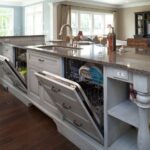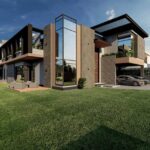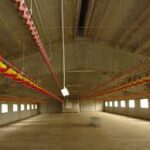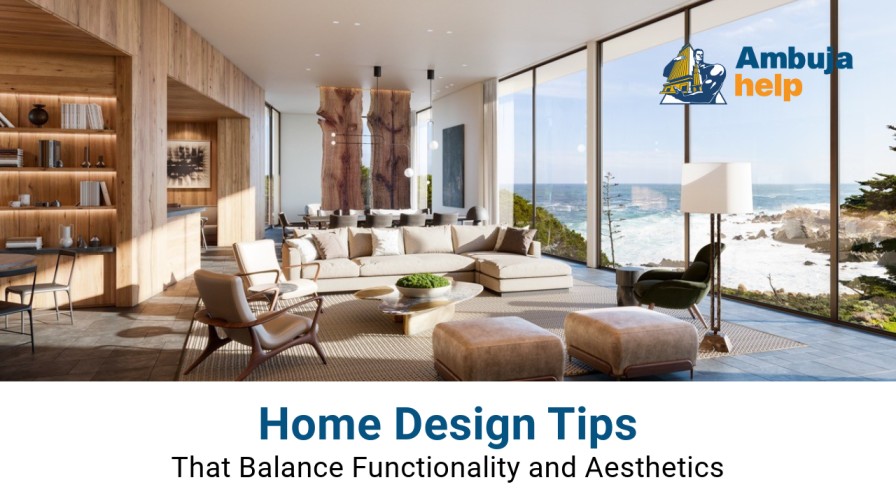When you think about your dream home, chances are you want it to look amazing and work effortlessly for your lifestyle. After all, the point of a multi-purpose house is to be comfortable, or a sleek kitchen to have space and mobility. That’s where the art of balancing utility with vision comes into play in your overall home design.
It’s not just about creating a magazine-worthy interior: it’s about designing a space that feels like you, meets your everyday needs, and stays within budget. So, how do you blend beauty and practicality easily? Let’s explore some tried-and-true tips that can help you craft a stylish home without giving up on comfort and usability.
1. Start with a Clear Vision
Before you dive into decor or furniture shopping, take a moment to reflect on what you truly want out of your space. Are you someone who entertains guests often? Or do you need a calming space to unwind after a long day?
Define your priorities and create a vision board with images that inspire you. This will serve as your guide throughout your home design journey. Whether you love minimalism or cozy boho vibes, clarity will help you make consistent and intentional design choices.
2. Plan the Layout for Real-Life Living
Functionality starts with layout. It’s essential to plan how you’ll move through each room and where furniture should go to support your day-to-day activities. For example, in an open-concept living space, make sure there’s a clear path from the kitchen to the dining area, and place seating in a way that encourages conversation, not just looks good on paper.
Use furniture that suits the proportions of your room, and don’t overcrowd the space. Less is more, especially if you want to maintain both elegance and ease of movement.
3. Choose Multi-Functional Furniture
One of the easiest ways to marry form and function is by investing in multi-utility furniture. Think ottomans with hidden storage, fold-out desks, sofa beds, or dining tables that extend when guests come over.
These smart choices can help you save space, reduce clutter, and maintain a cohesive, polished look. It’s especially helpful when you’re trying to keep an eye on your house construction cost without compromising on convenience.
4. Don’t Skimp on Storage
It’s hard to feel at ease in a home that’s always cluttered. That’s why smart storage solutions are a must for functional living. Incorporate built-in shelves, under-bed drawers, and customized cabinets into your plan.
You can make these elements beautiful too—try floating wooden shelves, stylish baskets, or decorative boxes that blend with your decor. Hidden storage doesn’t just hide mess; it enhances the look and feel of your space.
5. Use Durable, Stylish Materials
You don’t have to choose between beauty and durability. With so many high-quality materials available, you can have both. For example, opt for stain-resistant hangings, water-resistant flooring, or easy-to-clean surfaces in busy parts of the home.
When budgeting for materials, it’s a good idea to compare quotes to manage your house construction cost wisely. Choosing the right surfaces upfront will save you from frequent repairs or replacements in the long run.
6. Lighting Makes the Mood
Lighting is often overlooked, but it plays a massive role in balancing function and style. Use a mix of lighting types—ambient, task, and accent—to layer your lighting and create the right mood for every part of your home.
Pendant lights over kitchen islands, cozy floor lamps in reading corners, and adjustable lights in halls can elevate both the ambiance and usability of your spaces.
7. Mix Textures and Colors Thoughtfully
A well-designed home feels warm and inviting, and much of that has to do with the right combination of textures and colors. Don’t shy away from mixing matte finishes with glossy surfaces, soft fabrics with structured ones, or warm tones with cool ones.
Keep your colour choices stable, but use textures to add depth. This gives your home a personality while maintaining harmony across your rooms.
8. Choose Sustainable and Local Options
When selecting materials and accessories, think green and local. Not only does this support sustainability, but it can also cut down on delays and transport costs. Looking for local material suppliers is a smart move if you’re starting from the ground up, ensuring timely delivery and supporting local businesses.
Similarly, sourcing local woodwork, tiles, or decor items reduces environmental impact and adds unique charm to your home.
9. Personalize Your Space
A home that feels truly yours always scores high in both aesthetics and utility. Display meaningful artwork, photos, or heirlooms that reflect your story. Add plants for a natural touch and to boost air quality.
Even the most practical pieces—like coat racks, light switches, or doorknobs—can be chosen with personality in mind. Remember, it’s the little touches that make a house a home.
10. Consult Professionals
If you’re unsure where to start or how to bring your vision to life, don’t hesitate to get professional help. Architects and interior designers can offer insights you might overlook, particularly when balancing functionality with design goals. They also help optimize layout, lighting, and finishes so your space lives up to its full potential.
Local contractors can also give on-ground advice about material durability, sourcing, and cost-saving tips that align with your goals.
Final Thoughts
Striking the perfect balance between function and form doesn’t have to be overwhelming. With a little planning and intentionality, your home design can be a true reflection of your lifestyle—beautiful, comfortable, and smartly crafted for daily life.
- Home Design Tips That Balance Functionality and Aesthetics
- Discover expert home design tips that perfectly balance functionality and aesthetics. Create beautiful, practical spaces that reflect your style and meet everyday needs.
- Home Design Tips, home design,
Related posts:
 The Complete Guide to Selecting the Best Italian Marble to Install in Your Home or Office
The Complete Guide to Selecting the Best Italian Marble to Install in Your Home or Office
 How to Choose the Perfect Soft Mattress Topper That Suits Your Comfort
How to Choose the Perfect Soft Mattress Topper That Suits Your Comfort
 Confidential & Convenient: Get an STD Test at Home with Doctor on Call in Dubai
Confidential & Convenient: Get an STD Test at Home with Doctor on Call in Dubai
 Key Steps in Kitchen Installation Poole | Complete Guide 2025
Key Steps in Kitchen Installation Poole | Complete Guide 2025
 “How to Plan a Successful, Stylish, and Budget-Friendly Interior Renovation”
“How to Plan a Successful, Stylish, and Budget-Friendly Interior Renovation”
 How to Plan a Successful Poultry Farm Construction Project Easily
How to Plan a Successful Poultry Farm Construction Project Easily
 Struggling with Flat Pillows? Discover the Lasting Fluff of Down Feather Options
Struggling with Flat Pillows? Discover the Lasting Fluff of Down Feather Options
 Designing inside the Wilderness Isn’t Easy—Here’s Why Log Cabin Contractors Are the Experts You Need
Designing inside the Wilderness Isn’t Easy—Here’s Why Log Cabin Contractors Are the Experts You Need








